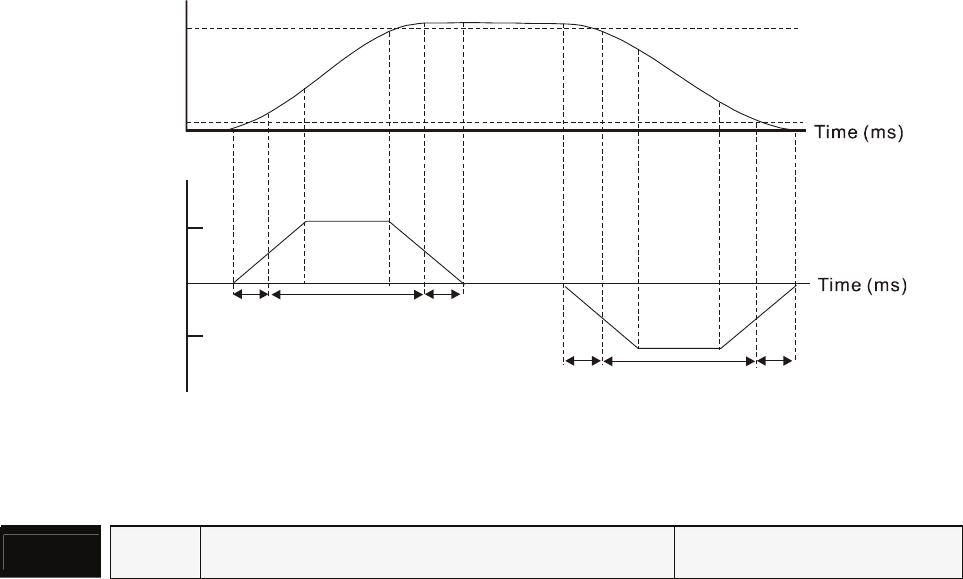
Chapter 6 Control Modes of Operation|ASDA-B Series
Revision January, 2009 6-11
The command source is selected according to the state of SPD0, SPD1 and parameter P1-01 (S or Sz).
Whenever the command signal needs to be more smoothly, we recommend the users to use S-curve
and low-pass filter.
6.3.3 Smoothing Strategy of Speed Control Mode
S-curve Filter
The S-curve filter is a speed smoothing command which provides 3 steps accel / decel S-curve to
smooth the speed command change of the motor during acceleration and deceleration. Using S-curve
filter can let the servo motor run more smoothly in response to a sudden speed command change.
Since the speed and acceleration curve are both continuous, in order to avoid the mechanical
resonance and noise may occur due to a sudden speed command (differentiation of acceleration), using
S-curve filter not only can improve the performance when servo motor accelerate or decelerate but also
can make the motor run more smoothly. S-curve filter parameters include P1-34 Acceleration Time
(TACC), P1-35 Deceleration Time (TDEC) and Accel /Decel S-curve (TSL), and the users can use these
three parameters to improve the motor performance during acceleration, deceleration and operation.
ASDA-B series servo drives also support the time calculation of completing speed command. T (ms) is
the operation (running) time. S (rpm) is absolute speed command, i.e. the absolute value (the result)
after starting speed subtracts the final speed.
0
TSL/2
TDEC
TSL/ 2
TSL /2
TACC
TSL/ 2
0
S-curve characteristics and Time relationship
Speed
Rated Speed
Torque
Acceleration
Deceleration
Relevant parameters:
P1 - 34
TACC Acceleration Time Communication Addr.: 0122H
Default: 200 Related Section:
Applicable Control Mode: S P1-35, P1-36, Section 6.3.3
Unit: ms
Range: 1 ~ 20000


















